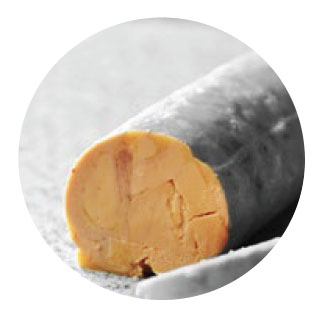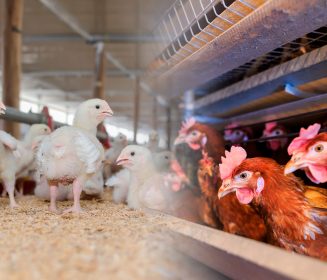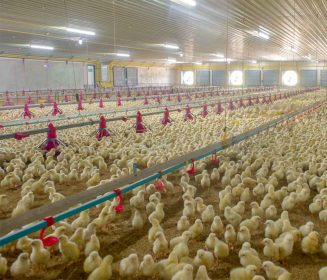07 Jan 2020
Commercial production and sanitary problems in ducks
El pato comercial en general es un tipo de ave muy resistente a condiciones adversas de clima y manejo.
Content available at:
Español (Spanish) العربية (Arabic)
The intensive production of ducks is a very popular activity and is developed in most countries of Southeast Asia and China. In addition, several European Union countries such as France, Germany, Hungary, the Netherlands and the United Kingdom are important producers. The United States has quite specialized industrial systems for the industrial production of duck meat that guarantees local market demands. In Latin America there is a significant production in Peru, Argentina, Brazil and Mexico.
Duck breeding
The commercial duck in general is a type of bird that is very resistant to adverse weather and handling conditions.
Additionally, ducks can have very satisfactory yields even when the quality of the food is not the best.
[registered]

Figure 1. Commercial duck farm in Pennsylvania, USA.
Baby ducks are not as delicate as baby birds of other species
PRODUCTS DERIVED FROM DUCK
-
DUCK MEAT
Duck meat is a type of red meat with high iron content and protein levels similar to those of chicken and turkey meat, and with a distinctive flavor. One of the reasons is related to the fact that the final preparation of meat is not as simple as the preparation of chicken or turkey.

Figure 3. Duck magret
In the United States and Canada, the commercial duck production industry has as its main clients specialized ethnic markets in cities such as San Francisco, New York, Boston and Toronto, which have an abundant Asian population.
-
PEKING DUCK
The Peking duck is the meat duck breed that is most commonly used worldwide. Over the years, this breed has been genetically selected to achieve high yields with excellent food conversions.
Peking ducks are one of the most popular breeds for their versatility and adaptability to adverse conditions
The average marketing age is seven weeks. These ducks produce large amounts of breast meat and their plumage is white and of excellent quality.
Other popular meat breeds include Aylesbury and Rouen ducks.
The final products of duck meat that are most commonly sold in the mentioned countries include complete ducks with legs and head with or without viscera, duck breasts, tongues, selected wings, legs, gizzards, necks and foie gras, among others, this last from duck and/or goose livers.

Figure 4. Foie gras
-
DUCK EGGS
The consumption of duck eggs in the West in general is not considered an important segment in commercial poultry farming. However, breeds such as Khaki Campbell and Indian Runner Ducks can produce more than 300 eggs per bird per year and in some countries in Asia they constitute an important segment of duck poultry farming.
There may be color variations in the eggs according to the breed. Indian Runner Ducks can produce eggs with a characteristic light blue coloration in the shell.

Figure 5. Indian Runner duck eggs
-
FEATHERS AND DOWN
Feathers and down, on the other hand, have a much higher commercial value than similar products from other poultry species.
A duck processing plant always has special washers and dryers for industrial processing of feathers and down.
Most frequent health problems in commercial duck production
Toxins
Commercial ducks are very susceptible to toxins. Cases of high mortality due to botulinum toxin, lead, or excess medication with certain antibiotics, especially sulfa-containing antibiotics, are frequently reported. Aflatoxins, rodenticides and insecticides such as parathion and diazinone are highly toxic to ducks.
Aspergillosis
Baby ducks are very susceptible to aspergillosis.
The pathogenesis, symptoms, and disease control are very similar to what happens in broilers.
Excellent disinfection at the level of incubators and hatchers is required as an effective strategy in duck production.
Locomotive problems
Tibial dyschondroplasia and bacterial infections at the level of the hock joint, infectious tenosynovitis and arthritis are the most frequent pathologies of the locomotor system. It is common that excess weight in certain birds is the most important underlying factor for the appearance of conditions in the legs.
Duck virus enteritis
Also known as “duck plague” or “Peste du canard” is a condition caused by a Herpes virus; it is highly contagious and lethal; it mainly affects ducks of more than five weeks of age. Susceptible birds develop symptoms of severe diarrhea, sometimes with blood.
Common findings at necropsies are mainly hemorrhagic plaques in the esophagus and intestine.
Like duck virus hepatitis, the immunization of breeding ducks with an attenuated active vaccine induces adequate passive protection in the offspring. Eventually, it is also necessary to vaccinate commercial birds.
Duck virus hepatitis
It is a highly contagious viral disease that affects young ducks mainly between 1 and 28 days. The younger the birds are, the more susceptible they are to the disease. It is very rare to occur in birds older than 30 days. Dissemination in the flock is very fast.
It can often affect 90% of birds in a fairly short period.
Affected birds generally develop spasmodic contractions and die, frequently with the neck and spine dorsally arched (backward).
The liver is enlarged and frequently bleeds. The virus can be isolated from blood, feces, and intestinal mucosa.
Disease prevention is quite successful by vaccinating the breeders with an attenuated active (live) viral vaccine that induces protective maternal antibodies in the progeny.
Avian influenza
Commercial ducks are generally resistant to avian influenza; however, type A H5N1 and H7N1 viruses can cause high mortality in ducks.
Riemerella anatipestifer
It is a bacterial infection very similar to the infection by Pasteurella sp.
It is lethal in ducks of all ages and usually causes acute mortality and morbidity in susceptible flocks.
The combination of live vaccines and autogenous bacterins in breeders and commercial birds has been one of the most effective strategies to prevent and control this disease.
Colibacillosis
It is very common to find cases of mixed infections of R. anatipestifer and E. coli
Septicemic lesions are very similar to what is observed in chickens and are often very important for the quality of baby ducks, causing pericarditis, perihepatitis, aerosacculitis in older ducks and peritonitis in breeding females.
The use of Sulfadimethoxine – ormetoprim (0.04-0.08%) in the food usually yields beneficial results in susceptible flocks.
Diseases as critical in chicken production as coccidiosis and infectious bronchitis are not economically important in the duck industry
[/registered]





































